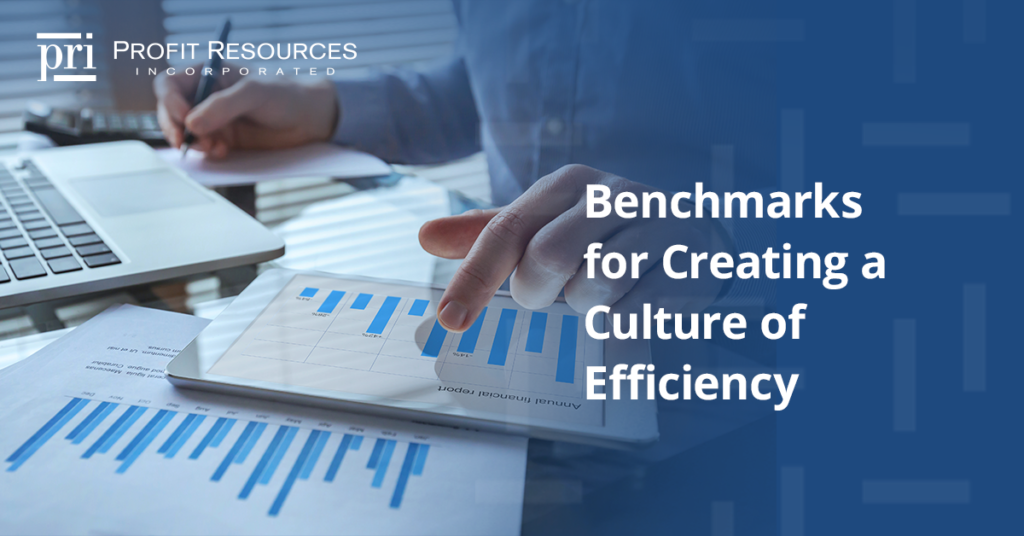
In our last blog, Efficiency: Why Do We Care?, we laid out a case demonstrating the benefits of improving FI efficiency. When an institution sets a goal to become more efficient and has a plan to push efficiency in the organization from the top down, there is one crucial question to ask.
What do we mean by efficiency?
There are many ways to measure efficiency, and the FI will want to dive deeper into each one to really know. However, from a high level, there are three main metrics we can observe to answer the efficiency question.
Barometers of bank efficiency
- Assets per FTE.
This metric refers to how much an FI is lending per full-time equivalent employee to manage the assets. If an FI has under $1 billion in assets, the assets per FTE should be $5 million. For more than $1 billion, the assets per FTE should be $6 million or better. In the current environment with PPP lending from the government weighting the scales, this metric may be inflated by 15 to 20 percent.
“If you’re underperforming the market, the state averages or your direct competitors, then you know there is a problem,” said Mike Holt, PRI partner. “It’s important to keep a close watch on this metric as everything is moving and changing quickly in the current economic environment.”
- Efficiency ratio.
This benchmark on average has been declining in the past decade as banks become more and more efficient. Currently, an efficiency ratio in the low 50s is good, and an FI with assets of more than $1 billion should aim for a ratio of 50 to 55.
“Again, it’s important to stack yourself against your peer group, your state averages and your direct competitors,” Holt said.
- Cost per assets.
FIs should aim for 2.5 percent of total cost per assets or 2 percent or lower on salaries and benefits. This metric can vary widely from state to state or even within a single state due to localized markets and differences in cost of living.
“If an FI is hitting these three metrics and performing well against its peer group and state averages, they can be confident that they are an efficient institution or quickly on their way to becoming one,” Holt said.
One caveat to using benchmarks in 2021? FIs must consider the effects of the pandemic. There are unique circumstances now that can skew the metrics and make it difficult to dig into whether an FI is efficient compared to 2019 or before. So much has changed.
“We don’t have many good benchmarks right now,” Holt said. “Putting good tracking practices in place for the future is the most important thing, and now is an excellent time to do that. In the meantime, focus on encouraging your team to manage their own costs, not by making it a bad thing to spend but instead making it a positive thing to save. This is a highly effective way to create an efficient culture.”
Profit Resources specializes in identifying profitability improvement areas for financial institutions through revenue growth, cost control, streamlining processes, and effective use of technology. Contact us to learn more about our personalized approach to propel growth and improve profitability.
Other Recent Articles
- Community Banking Month: Sovereign Bank’s People-First Approach to Building Stronger Communities
- Maximizing System Utilization: Ditch Paper and Manual Processes
- Are Good Vendor Partnerships Leading You to Bad Ones?
- Leading the Way Inspired by Efficiency
- The Invisible Expense: Tackling Hidden Costs in Digital Transformation, Part 2
- The Invisible Expense: Tackling Hidden Costs in Digital Transformation, Part 1
